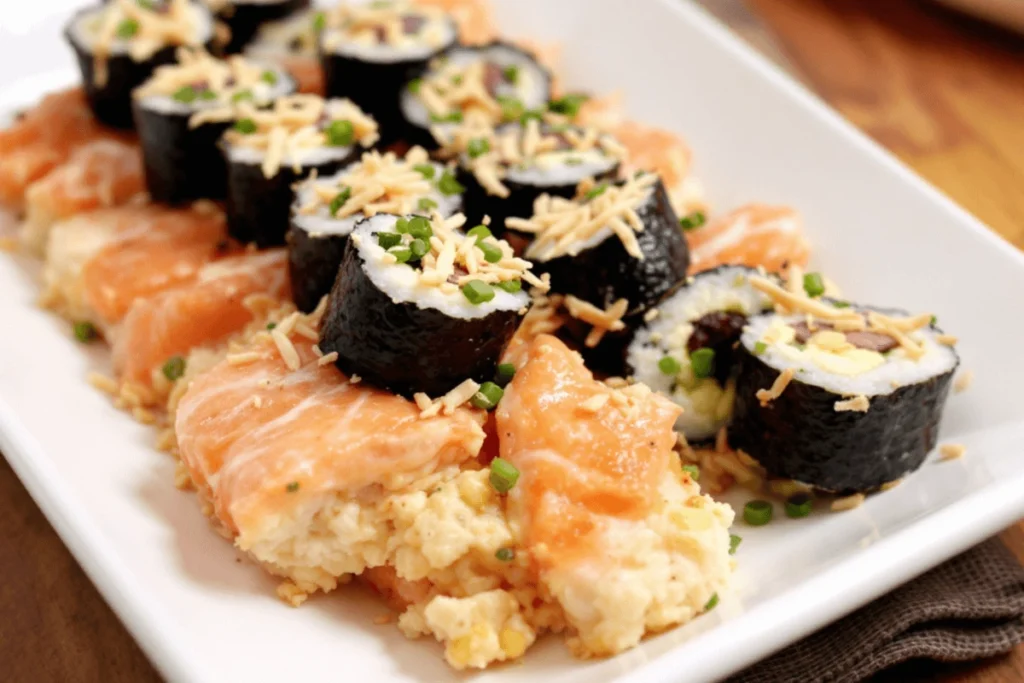
Introduction
Salmon sushi bake is a warm, creamy, and flavorful take on traditional sushi, combining the rich taste of baked salmon, seasoned rice, and umami-packed toppings into a delicious, shareable dish. Unlike classic sushi rolls, this casserole-style dish is baked to perfection, making it a hearty and comforting meal that’s easy to prepare.
Why You’ll Love Salmon Sushi Bake:
- Easy to Make: No rolling or precise knife skills are required—just layer, bake, and serve.
- Great for Sharing: Perfect for potlucks, family dinners, and gatherings.
- Customizable: Can be topped with different ingredients like spicy mayo, furikake, or avocado for added flavor.
- Warm and Comforting: A baked twist on sushi that offers a cozy and indulgent experience.
The Origin of Sushi Bake
How Sushi Bake Became a Popular Fusion Dish
Sushi bake is a relatively new creation that gained popularity in the early 2010s, particularly in the Philippines and the United States. While traditional sushi is often served cold and delicately rolled, sushi bake takes a more casual, layered approach, making it an easy-to-serve dish for groups.
- Sushi bake is believed to have been inspired by sushi rolls like the California Roll, which contain fully cooked ingredients like imitation crab and mayonnaise.
- The dish quickly gained popularity through social media and food bloggers, as its easy-to-make format appealed to home cooks.
- Over time, variations like spicy tuna sushi bake, shrimp sushi bake, and salmon sushi bake emerged, offering different takes on the same creamy, baked concept.
Today, sushi bake continues to be a trendy and beloved fusion dish, enjoyed by sushi lovers and those looking for a simpler, more comforting way to experience Japanese flavors.
Why It’s the Perfect Alternative to Traditional Sushi Rolls
If you love sushi but don’t want the hassle of rolling it, sushi bake is the perfect solution.
- No Special Equipment Needed – Unlike traditional sushi, which requires a bamboo mat for rolling, sushi bake is assembled in a baking dish, making it foolproof.
- Easier to Serve – Instead of slicing individual sushi rolls, sushi bake is scooped into nori sheets or served as a rice casserole.
- Great for Large Gatherings – Sushi bake can easily feed a crowd, unlike sushi rolls, which require more time and effort to prepare in large quantities.
Essential Ingredients for the Perfect Salmon Sushi Bake
A great salmon sushi bake comes down to fresh ingredients, bold seasonings, and the right balance of textures. Each element plays a crucial role in ensuring the dish is flavorful, creamy, and satisfying.
Choosing the Right Type of Salmon: Fresh vs. Canned
Both fresh and canned salmon can be used in a sushi bake, depending on preference and availability.
Fresh Salmon:
- Offers a richer, more natural flavor and a tender texture.
- Can be baked, flaked, and seasoned before mixing with other ingredients.
- Ideal for those who prefer a more premium, authentic sushi taste.
Canned Salmon:
- A convenient and budget-friendly option.
- Already cooked and flaked, saving prep time.
- Works well when mixed with mayo and seasonings for a creamy, spreadable texture.
Which One to Use?
- If you want a more indulgent and fresh-tasting dish, go for baked fresh salmon.
- If you need a quick, easy, and affordable alternative, canned salmon is a great option.
The Role of Sushi Rice in Flavor and Texture
Sushi rice is the foundation of any sushi dish, and it plays a big role in the flavor and consistency of sushi bake.
Short-Grain Sushi Rice:
- Has a sticky, slightly chewy texture that holds the dish together.
- Best when cooked and seasoned with a mix of rice vinegar, sugar, and salt for an authentic sushi flavor.
How to Season Sushi Rice for Sushi Bake:
- Cook short-grain sushi rice according to package instructions.
- Mix ¼ cup rice vinegar, 1 tablespoon sugar, and ½ teaspoon salt, then fold it into the rice while it’s still warm.
- Let the rice cool slightly before spreading it evenly in the baking dish.
Must-Have Seasonings: Furikake, Mayo, and Sriracha
Furikake (Japanese Rice Seasoning):
- A mix of seaweed, sesame seeds, and dried fish flakes that adds umami flavor.
- Sprinkled over the rice for a more authentic sushi taste.
Japanese Mayo (Kewpie Mayo):
- Creamier and slightly tangier than regular mayonnaise.
- Mixed with salmon for a rich, smooth consistency.
Sriracha or Spicy Mayo:
- Adds a spicy kick and balances the richness of the dish.
- Can be drizzled on top for extra flavor and visual appeal.
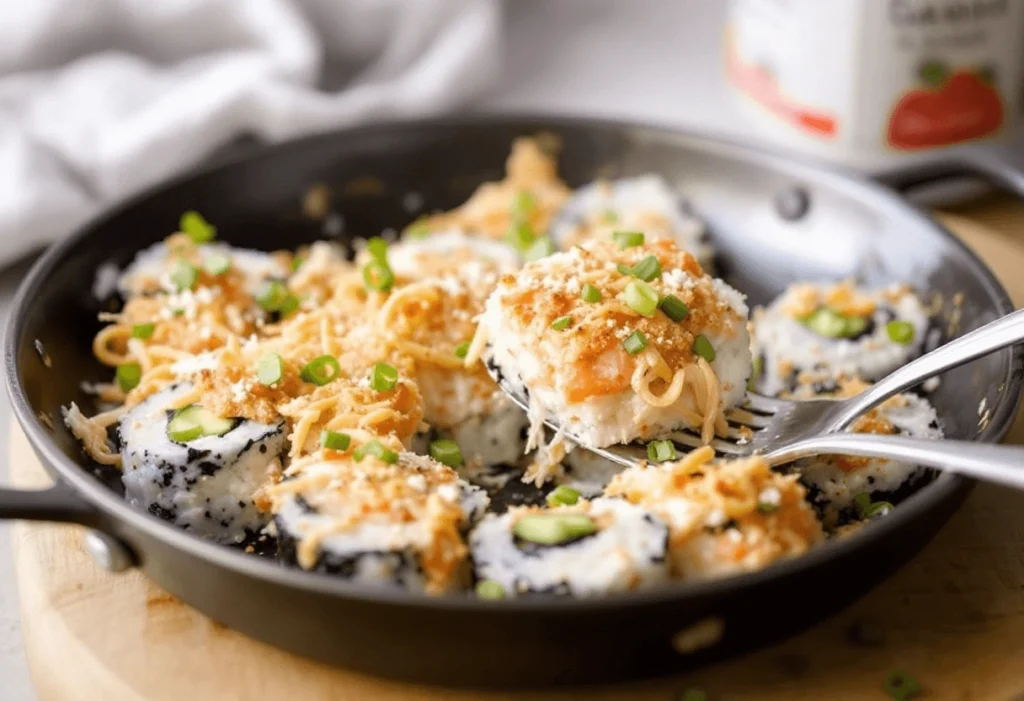
Step-by-Step Recipe for Salmon Sushi Bake
Making salmon sushi bake is easy, foolproof, and requires no rolling. Just layer the ingredients, bake, and enjoy!
1. Preparing the Rice: Seasoning and Spreading Evenly
- Cook 2 cups of short-grain sushi rice and let it cool slightly.
- Mix ¼ cup rice vinegar, 1 tablespoon sugar, and ½ teaspoon salt, then stir into the warm rice.
- Lightly grease a baking dish and spread the seasoned rice evenly in a flat layer.
- Sprinkle furikake generously over the rice for extra flavor.
2. Mixing the Salmon with Creamy and Spicy Elements
- If using fresh salmon:
- Bake two salmon fillets at 375°F (190°C) for 12-15 minutes, then flake the fish.
- If using canned salmon:
- Drain the liquid and flake the salmon in a bowl.
- Mix the flaked salmon with:
- ½ cup Kewpie mayo (or regular mayonnaise).
- 1-2 tablespoons Sriracha (adjust for spice preference).
- 1 teaspoon soy sauce for extra umami.
- Spread the salmon mixture evenly over the rice layer.
3. Baking to Perfection: Achieving the Right Texture
- Preheat the oven to 375°F (190°C).
- Bake for 15-20 minutes, or until the top is slightly golden and bubbling.
- Optional: For a crispy finish, broil for 1-2 minutes at the end.
How to Serve:
- Scoop a portion onto a sheet of roasted nori (seaweed) and eat like a sushi hand roll.
- Garnish with extra furikake, green onions, or avocado slices.
- Drizzle with spicy mayo or unagi sauce for added richness.
Expert Tips for Achieving the Best Sushi Bake
A perfectly baked sushi bake should be creamy, flavorful, and balanced in texture. Here are some expert tips to ensure moist rice, bold flavors, and a deliciously crisp top.
How to Keep the Rice from Drying Out in the Oven
Since sushi rice is naturally sticky, it can become too dry or hard when baked. Follow these tips to maintain the right texture:
- Use Freshly Cooked Sushi Rice: Rice that has been sitting too long may dry out when baked.
- Add a Moisture Barrier:
- Sprinkle a thin layer of furikake over the rice before adding the salmon mixture.
- Lightly drizzle soy sauce or unagi sauce over the rice before layering.
- Cover the Dish with Foil: For the first 10 minutes of baking, cover the dish with foil to trap moisture, then remove it to let the top brown.
- Don’t Overbake: Bake at 375°F (190°C) for 15-20 minutes—longer baking times can cause the rice to become tough.
The Best Toppings for Extra Flavor and Crunch
Adding toppings not only enhances the flavor but also provides a textural contrast to the creamy salmon and soft rice.
Crispy & Crunchy Toppings:
- Panko breadcrumbs – Adds a crisp, golden crust when sprinkled on top before baking.
- Fried shallots or garlic chips – Provides extra crunch and a deep umami flavor.
- Crushed tempura flakes – A light, crispy topping that mimics tempura texture.
Flavor-Boosting Garnishes:
- Furikake – Japanese rice seasoning that adds umami and a touch of saltiness.
- Drizzles of spicy mayo or unagi sauce – Enhances richness and adds visual appeal.
- Sliced green onions or chives – Adds freshness to balance the richness of the bake.
- Sesame seeds – Toasted sesame seeds add nutty depth and a slight crunch.
Common Mistakes and How to Avoid Them
- Mistake: The Rice Becomes Hard and Chewy
- Solution: Use fresh, properly seasoned sushi rice, and bake covered for the first few minutes.
- Mistake: The Bake Is Too Dry or Lacking Creaminess
- Solution: Mix salmon with enough mayo and sriracha to keep it moist. Avoid using too much heat while baking.
- Mistake: The Toppings Burn Before the Bake is Done
- Solution: If using delicate toppings like panko or sesame seeds, add them halfway through baking or just before broiling.
Creative Variations of Salmon Sushi Bake
Sushi bake is highly customizable, allowing you to experiment with different flavors and dietary preferences. Here are three exciting variations to try:
Spicy Salmon Sushi Bake with Sriracha and Jalapeños
For those who love bold, spicy flavors, this version adds an extra kick to the classic salmon sushi bake.
How to Make It:
- Increase the sriracha in the salmon mixture for more heat.
- Add chopped jalapeños or Thai chili slices to the salmon topping before baking.
- Drizzle extra spicy mayo on top after baking for an extra spicy bite.
- Garnish with chili flakes or togarashi (Japanese spice blend) for added heat.
Keto-Friendly Sushi Bake Without Rice
This low-carb sushi bake removes rice but keeps all the delicious sushi flavors.
How to Make It:
- Replace rice with a layer of cauliflower rice (cooked and seasoned like sushi rice).
- Use extra salmon and cream cheese for a richer, more filling texture.
- Top with crushed pork rinds or sesame seeds for a crispy, low-carb crunch.
Vegan and Dairy-Free Sushi Bake Alternatives
For a plant-based sushi bake, swap out salmon and mayo for dairy-free alternatives.
How to Make It:
- Use mashed chickpeas or marinated tofu instead of salmon.
- Swap Kewpie mayo for vegan mayo to maintain the creamy texture.
- Add roasted mushrooms or seaweed flakes for extra umami flavor.
- Top with avocado slices, sesame seeds, and furikake for a delicious finish.
Best Dipping Sauces and Pairings for Sushi Bake
The right dipping sauces and side pairings can enhance the umami, balance the richness, and add depth to your sushi bake. Whether you enjoy classic flavors or a citrusy twist, here are the best accompaniments for this warm and creamy dish.
Classic Soy Sauce and Wasabi Pairings
Soy Sauce – A traditional sushi pairing that adds savory umami and a touch of saltiness.
- Use low-sodium soy sauce to prevent overpowering the delicate salmon flavors.
- Tip: Lightly dip your sushi bake or drizzle a small amount for controlled seasoning.
Wasabi – Adds a sharp, spicy kick that balances the creaminess of the dish.
- Mix a small amount of wasabi into soy sauce for an extra punch.
- Tip: Use wasabi sparingly to enhance, not overpower, the sushi bake’s flavors.
Pickled Ginger and Ponzu Sauce for a Citrus Twist
Pickled Ginger (Gari) – Cleanses the palate between bites, allowing you to fully appreciate the rich salmon flavor.
- Tip: Enjoy a small piece between servings rather than placing it directly on the sushi bake.
Ponzu Sauce – A blend of soy sauce, citrus juice (yuzu or lemon), and mirin, adding a light, tangy contrast to the creamy sushi bake.
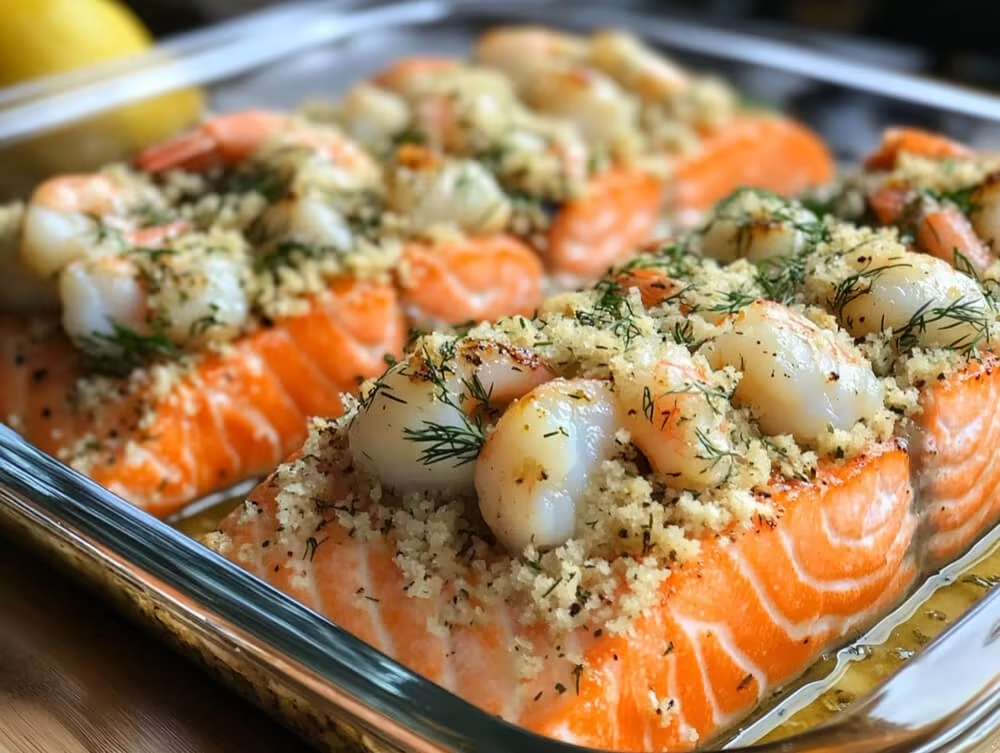
How to Store and Reheat Salmon Sushi Bake
Sushi bake is best enjoyed fresh, but proper storage and reheating can help preserve its creamy texture and rich flavor.
The Best Way to Keep Leftovers Fresh
Refrigeration:
- Store leftover sushi bake in an airtight container to prevent it from drying out.
- Keep refrigerated at 40°F (4°C) or lower and consume within 2-3 days for the best quality.
Avoid Freezing:
- The rice and creamy salmon mixture can become grainy and dry when frozen and thawed.
- If necessary, freeze without the rice and assemble fresh when reheating.
Preventing Dryness:
- Place plastic wrap directly over the surface of the sushi bake before sealing the container to lock in moisture.
How to Reheat Without Losing Moisture and Flavor
Oven or Toaster Oven (Best Method):
- Preheat oven to 350°F (175°C).
- Cover sushi bake loosely with foil to prevent drying out.
- Bake for 10-15 minutes, or until heated through.
Microwave (Quickest Method):
- Place a portion on a microwave-safe plate.
- Cover with a damp paper towel to retain moisture.
- Heat in 20-second intervals until warm.
Air Fryer (For a Crispy Top):
- Preheat air fryer to 325°F (163°C).
- Heat for 5-7 minutes until the top is lightly crispy.
FAQs
Can I use cooked salmon instead of raw?
Yes! In fact, sushi bake traditionally uses cooked salmon, making it a great option for those who prefer not to eat raw fish.
- Fresh Cooked Salmon: Bake, grill, or pan-sear salmon fillets, then flake them before mixing with mayo and seasonings.
- Canned Salmon: A convenient, budget-friendly option that works well in sushi bake. Just drain and flake it before mixing.
- Smoked Salmon: Can be used for a slightly different texture and a smoky flavor twist. However, it’s best added after baking to avoid overcooking.
How do I keep my sushi bake from being too dry?
A dry sushi bake can happen if the rice or salmon lacks moisture. Here’s how to keep it creamy and flavorful:
Keep the Rice Moist:
- Use freshly cooked sushi rice (not day-old rice) and season it properly with rice vinegar, sugar, and salt.
- Avoid overbaking—15-20 minutes at 375°F (190°C) is enough.
- Cover with foil for the first 10 minutes of baking to trap moisture.
Ensure a Creamy Salmon Mixture:
- Mix the salmon with Kewpie mayo (or regular mayo) and a bit of sriracha or soy sauce to keep it rich and creamy.
- Add a little cream cheese for extra moisture and richness.
Don’t Overbake:
- Baking too long can dry out the rice and toppings.
- Broil for 1-2 minutes at the end to crisp up the top without drying out the bake.
Can I make a gluten-free version of sushi bake?
Yes! It’s easy to make a gluten-free sushi bake with a few simple swaps:
- Use Gluten-Free Soy Sauce or Tamari: Regular soy sauce contains wheat, so opt for a gluten-free alternative.
- Check Your Furikake: Some furikake blends contain soy sauce or wheat-based additives. Look for a gluten-free version or make your own with toasted sesame seeds and nori flakes.
- Avoid Imitation Crab: If using imitation crab, note that most brands contain gluten as a binder. Use real crab or salmon instead.
- Choose Gluten-Free Panko (If Adding a Crunchy Topping): Regular panko contains wheat, but gluten-free panko breadcrumbs or crushed rice crackers work well as a substitute.
What’s the best way to add crunch to sushi bake?
Adding crunch creates a delicious contrast to the creamy salmon and soft rice. Here are the best ways to achieve it:
Panko Breadcrumbs:
- Sprinkle on top before baking for a golden, crispy crust.
- Tip: Toss panko in a little melted butter or sesame oil before sprinkling for extra crispiness.
Tempura Flakes (Tenkasu):
- Provides a light, airy crunch similar to tempura batter.
- Best sprinkled after baking to maintain texture.
Crushed Rice Crackers or Nori Chips:
- A gluten-free alternative to breadcrumbs that adds extra crispiness.
Fried Garlic or Shallots:
- Adds a deep, umami-rich crunch when sprinkled on top.
Toasted Sesame Seeds and Furikake:
- While not as crunchy, these add texture and extra flavor to each bite.
Conclusion
Salmon sushi bake is a delicious, comforting, and easy-to-make twist on traditional sushi, combining creamy, savory flavors with the warmth of a baked dish. Its layered texture, rich umami taste, and simple preparation make it perfect for sharing at gatherings or enjoying as a weeknight meal.
By choosing high-quality salmon, properly seasoned sushi rice, and flavorful toppings, you can create a perfectly balanced dish that’s both satisfying and customizable. Whether you prefer a spicy kick, a gluten-free alternative, or extra crunch, there are countless ways to adapt sushi bake to your taste.
Viral Tuna Salad: 5 Bold Reasons Matthew McConaughey’s Recipe Wins
Healthy Homemade Chicken Mortadella
Chicken Mortadella changed my deli game forever. I used to stare at processed meat…
The BEST Taco Pasta
When I’m short on time and need to get a satisfying dinner on…
Classic German Kartoffelpuffer Recipe (Authentic, Crispy & Easy to Make)
Easy Butter Pecan Cookies Recipe
There’s something undeniably comforting about the scent of buttery, nutty cookies wafting from…
Perfect Strawberry Cheesecake Recipe
If there’s one dessert that’s guaranteed to silence a lively room, it’s this…


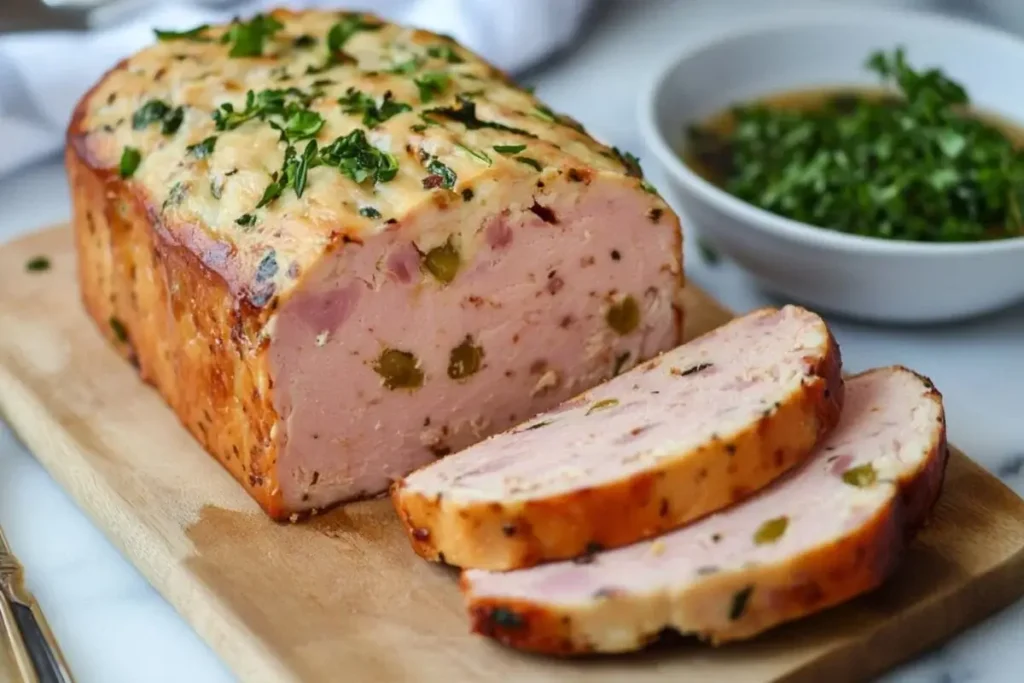

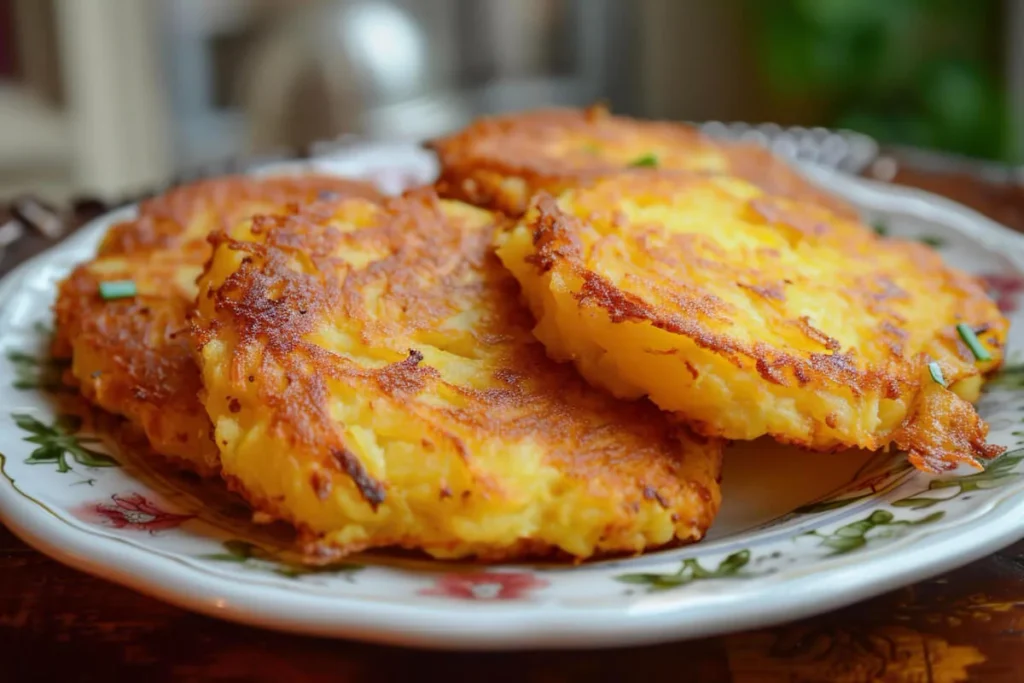

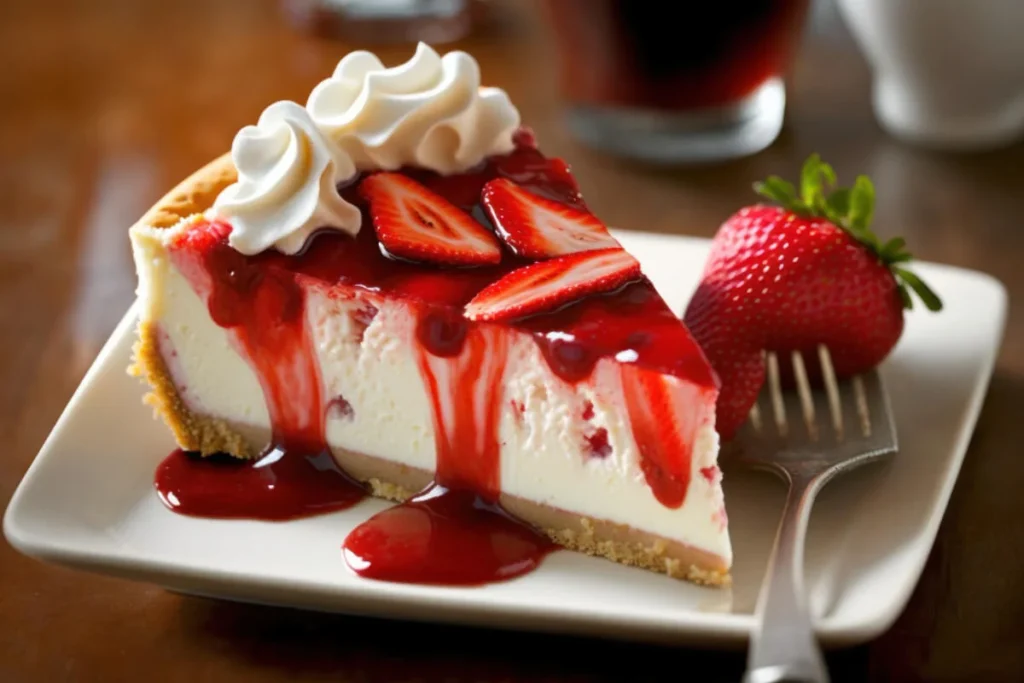
3 thoughts on “Salmon sushi bake”